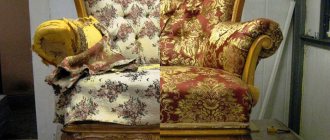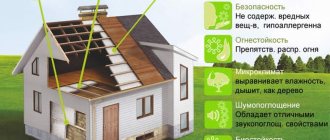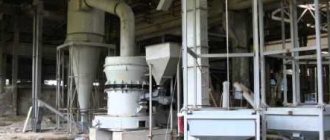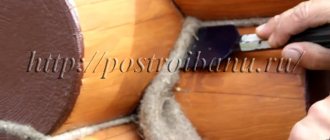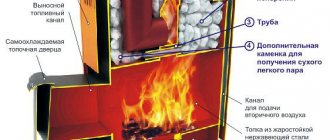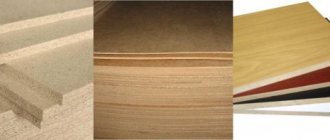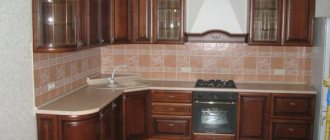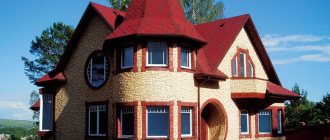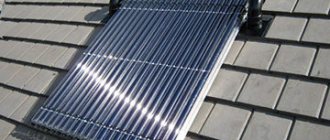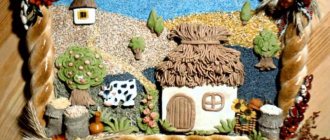It is difficult to imagine a more profitable building material than one for which waste is used as raw material.
And if you can also make it yourself, there is simply no price for such material!
All of the above applies to cellulose insulation, known in our country as “Ecowool”. From this article you will learn how to produce Ecowool with your own hands.
Advantages
Before talking about the advantages of Ecowool, we should tell you more about it itself.
Under this name lies only shredded waste paper, to which boric acid (antiseptic) and borax (fire retardant) are added.
The mass ratio of the components is, respectively, 81%, 12% and 7% (for some manufacturers - 80/10/10 percent).
Here are the advantages of this heat insulator:
- It's very cheap.
- Extremely easy to make.
- In terms of thermal resistance, it is not inferior to the best modern insulation materials: the thermal conductivity coefficient lies in the range of 0.037 - 0.042 W/m*C, like that of polystyrene foam and mineral wool.
- Provides good noise insulation effect.
- It is very light: the volumetric weight ranges from 28 to 60 kg/cu. m.
- Just like polyurethane foam (polyurethane foam), when applied it fills even the most inaccessible places and forms a seamless coating.
- Surpasses polymer insulation in terms of environmental friendliness. The biofire retardant additives available in Ecowool are considered low-toxic and moderately harmful.
- The top layer can retain up to 20% moisture, while the main part fully retains its heat-insulating properties.
- After getting wet, it dries very quickly (moisture evaporates well due to the capillary effect) and at the same time completely restores its thermal insulation properties.
Ecowool does not cause corrosion of metals because it does not exhibit chemical activity (pH ranges from 7.8 to 8.2).
Does Ecowool burn?
The official name of the borax contained in Ecowool is sodium tetraborate.
This substance belongs to the so-called group. flame retardants - fire retardant impregnations. Each molecule can include up to 10 water molecules (the so-called crystalline hydrate).
When heated, they are released and turn into water, which prevents fire. Thanks to this, Ecowool has the ability to withstand open flames for a long time.
The flammability group may differ for different brands. The following indicators are considered the best:
- according to GOST 30244: G2 (moderately flammable);
- according to DIN 4102 and GOST 30402: B2 (moderately flammable);
- according to GOST 12.1.044: D2 (moderately smoke-generating).
Ecowool smoke, unlike polymer insulation, such as polystyrene foam, is not toxic.
Pros and cons of environmentally friendly material
Ecowool has many advantages that make cellulose thermal insulation in demand in construction: high performance characteristics, affordable cost, ease of use.
Advantages of ecowool compared to other types of thermal insulation:
- the thermal insulation characteristics of ecowool are 12% higher than those of mineral wool;
- the material has low breathability and elasticity, and, unlike mineral wool and polystyrene foam, does not transmit sound waves;
- thanks to its ability to dry quickly, it maintains natural humidity in the room;
- environmentally friendly material does not contain phenolic binders or toxic substances;
- When laid, the homogeneous mass does not form seams and fills the entire volume, which eliminates the formation of cold bridges and voids;
- the material is treated with special compounds that increase the fire resistance of ecowool and resistance to mold and mildew;
- The thermal insulation is odorless.
When laying ecowool, it is necessary to strictly follow the technology and use special equipment. Dry installation creates a lot of dust. The material should not be used as thermal insulation in rooms with high levels of humidity.
But, despite the listed disadvantages of the material, its popularity in the construction market is constantly growing, so a business in the production of ecowool will bring good income to the owner.
Making (production) ecowool with your own hands
Obviously, the material, which is shredded paper, cannot be difficult to manufacture.
Therefore, many people make Ecowool in a handicraft way. Newspapers, corrugated cardboard, etc. can be used as raw materials.
You need to make the grinder yourself - it is something like a coffee grinder, only of larger sizes.
The easiest way to assemble such a unit is based on an old washing machine with an activator. The latter is removed and in its place a structure of several knives fastened together is installed. If the “native” engine turns out to be weak for such a load, it should be replaced with a more powerful one.
After shredding, the waste paper only needs to be treated in several stages with antiseptic and fire-retardant impregnations.
That, in fact, is the whole technology. Of course, “homemade” ecowool cannot be compared with factory-made ones, but it is quite suitable for insulating a dacha or garage.
No one doubts the need to insulate their home, but not everyone knows whether it is possible to insulate a house from the inside. Let's consider all the arguments for and against.
An overview of thermal insulation materials that cannot be damaged by rodents is presented here.
And in this topic https://microklimat.pro/uteplenie/doma/potolka/kak-pravilno-uteplit-kryshu.html there are detailed instructions for roof insulation. Features of insulation of pitched and flat roofs.
Ecowool production on industrial equipment
Opening a small enterprise for the production of Ecowool requires relatively low capital investments, because this technology does not require any expensive high-tech equipment.
But you won’t be able to completely avoid costs by installing, for example, a homemade shredder: the material will turn out to be of low quality, and therefore uncompetitive.
The technology includes several stages:
- Incoming waste paper is manually checked for the presence of foreign objects, such as plastic envelopes (files), clips, CDs, which are removed. Unsuitable paper is also rejected. All subsequent stages of processing selected raw materials are carried out automatically.
- The paper undergoes an initial cutting, after which staples, paper clips and other metal products are removed from its mass using a powerful magnet.
- Grinding again. This time - to a size of approximately 5x5 cm.
- The paper pulp is loaded into a mixer, where it is impregnated with brown and boric acid.
- Final grinding to 5 mm fraction.
- Impregnation again with a small amount of boric acid.
- Some of the finished products are tested, not only at the enterprise, but also in an independent center (Ecowool must be certified).
- Next, the heat insulator is packaged in pressed form (the volume is reduced by 4 times compared to the operational volume) in polyethylene. The weight of the 1st package is from 5 to 20 kg.
Filtration with a magnet, complete crushing and impregnation of waste paper takes only about 5 minutes.
The best raw materials are waste from paper and cardboard production - some scraps, remnants of corrugated packaging, etc.
Ecowool made from newspapers is considered to be of low quality: firstly, because of the printing ink (contains toxic components), and secondly, because of the heterogeneity of the composition.
How to apply ecowool
Ecowool was developed as a reliable, useful material for people, the price of which, due to the components used, is low. So approximately 80% of it consists of carefully recycled waste paper; about 12% of the composition is boric acid, which provides the antiseptic properties of the material; It consists of 7% borax, which makes it immune to fire. There are impurities of lingin - which, when exposed to moisture, adheres to the components of ecowool and binds it to other surfaces. Ecowool does not emit any harmful chemicals, and metals located next to it do not corrode.
Here are the methods of laying ecowool used:
- manual application;
- installation using mechanical devices;
- wet spraying.
Manual application of ecowool
First of all, you need to place the insulation in some container, where it is thoroughly loosened using available tools. Then ecowool must either be poured into pre-prepared cavities (this could be walls, roofing, attic, etc.). Or lay it out on a horizontal surface that you plan to insulate (floor, ceiling). If the material is laid in the walls, then to achieve the best insulation effect, its density must be at least 64 kg/m3. If in floors - from 40 kg/m3. So manual laying into walls is a painstaking task, taking a lot of time and effort. It is advisable to use it if only a small area is being processed.
Mechanized installation of ecowool
In this case, blowing installations are preliminarily used. First, they loosen the ecowool, then blow it with a stream of air to the desired location. The advantages of this method are that it is possible to apply ecowool into cavities that cannot be reached with your hands; moreover, this work can be carried out without dismantling structures in an already occupied house.
Wet spraying ecowool
This method is designed to enhance the binding capabilities of ecowool. You will need a special device that pumps water or a mixture of water and glue under pressure. Also a valve. If you follow the instructions, ecowool will soon harden, and after 12 hours it can already interact with other materials. Another advantage is that the thickness of the insulation layer is always under your control, and the resulting surface is perfectly flat.
Necessary equipment
The basis for do-it-yourself ecowool production is the following machines:
- shredder;
- dispersant;
- packaging and fan installations.
In 2005, in Omsk, the production of all the necessary equipment for the production of cellulose heat insulation was mastered (Ekovata Omsk Engineering, Teplograd).
You can order a line with a capacity of 250 to 700 kg/h, and it will be equipped with an automatic packaging unit and dispensers for boric acid and borax, also operating in automatic mode.
Home production technology
Ecowool is easy to make; you can organize a production line at home. To do this, you will need raw materials (waste paper) and a special grinding unit, the principle of which is similar to the operation of an ordinary coffee grinder. At home, even an activator washing machine is adapted for these purposes by installing a system of sharp knives on the activator.
Of course, the quality of the products will be lower; such ecowool (made by hand) is not suitable for sale. But it can be used for personal purposes, after being pre-treated with chemicals that create fire resistance. There are many educational videos on homemade ecowool production on the YouTube channel.
Costs and profits
Let's roughly calculate the size of the starting investment:
- Purchase of equipment: a line with low productivity will cost approximately 1.4 million rubles.
- Delivery of equipment, its installation and commissioning: about 400 thousand rubles.
- Rent of premises with an area of 50 - 60 sq. m and the salary of several employees: by agreement.
Taking into account additional expenses, starting a business may require from 2 to 3 million rubles.
The monthly profit of a small enterprise producing ecowool is approximately 250 - 300 thousand rubles.
Consequently, the project will pay off in 10 - 12 months.
Ways to optimize costs
The full power of the equipment will not be used in the first year. Therefore, purchase equipment for the production of ecowool that is simpler. In the future, business development will make it possible to sell it without any problems and purchase more powerful units.
A profitable option is to combine production and construction business. In this case, it is possible to provide comprehensive services for the installation of insulation. To do this, you will need blowing installations and a barrel for wet spraying. One of the options for earning extra money is to rent out such equipment.
An industrial line for the production of ecowool can also be used to produce eco-boards, briquettes, and pellets. For these purposes, about 500,000 rubles will need to be invested in additional installations.
Do-it-yourself ecowool insulation
Cellulose insulation is sold in compressed form, so it must be loosened before installation.
To do this, you need to take a capacious container and fill it with Ecowool about a third. After this, install a mixer attachment on the electric drill, which is used to prepare mortars, and begin loosening.
Installation of ecowool using blow molding equipment
Ecowool insulation is carried out in several ways:
Manual filling or do-it-yourself installation
This method is used for small amounts of work. The material is simply poured onto a horizontal surface (for example, an attic floor) or filled into a cavity - in a wall or roofing pie. The packing density in the wall should be at least 60 - 70 kg/cu.m. m, on the floor slab - at least 35 - 40 kg/cu.m. m.
Dry mechanized backfill
Used for large volumes of work and only for filling cavities. Ecowool is supplied by a blowing unit. At the same time, it quite tightly fills all the cracks and other hard-to-reach places, so that dismantling of building structures before insulation is not required.
When insulating floors, a cavity is created by stretching a waterproofing film, in which a hole is left for inserting a hose. If you try to apply Ecowool on an open area in this way, it will simply be blown away by a stream of air.
Factory-built blow molding machines are equipped with an opening agent and can convey material up to 200 m horizontally or lift it to a height of up to 40 m.
Wet or wet-adhesive mechanical spraying
During wet spraying, a water suspension is supplied to the flow of Ecowool moving through the hose using a special pump.
Thanks to the lignin present in cellulose, the moistened thermal insulator adheres to the insulated structure like construction foam.
Thus, wet spraying allows you to insulate open areas with Ecowool, which are also located vertically or with a slope.
After drying, the applied layer resembles papier-mâché in its structure. Protrusions and sagging can be trimmed with electric roller shears.
If you add glue to the water at the spraying stage, the heat-insulating layer will adhere better, be more flexible and deform less when drying.
The simplest installation for laying ecowool
To install the insulation, you will need a blowing machine for ecowool.
You can make a blow molding machine for mechanical laying of ecowool with your own hands using a garden vacuum cleaner with the function of regulating the suction force.
The engine of the unit must develop a power of 2 kW.
The procedure is as follows:
- To increase suction power, disconnect part of the suction hose by moving the terminals from it to the main base.
- Using wire cutters, cut off the plastic teeth in the pipe leading to the dust container (it is important not to damage the housing). If the teeth are left, they will become clogged with heat insulation.
- A corrugated tube for laying electrical wiring with a length of 7 m and a diameter of 63 mm must be inserted into the hole for the dust collector. If the teeth were cut cleanly, the tube will go in easily, after which it will need to be secured with tape.
- When dry laying, a fabric strip should be wrapped around the corrugated tube to seal the hole through which the tube is inserted into the cavity. This measure will help prevent dust from entering the room. Please note that the tube will be removed as the cavity is filled, so the O-ring should move fairly freely on it.
To carry out wet spraying, you will have to purchase a water pump and a flat spray nozzle with a 25-degree whisk angle. It is very important to set up the system correctly so that the humidification is not excessive. Otherwise, the ecowool will not be able to stay on the structure and will fall off. The degree of moisture should be such that when squeezing, only a few drops of water can be squeezed out of the heat insulator.
When spraying onto vertical surfaces, glue may not be added. It is used only when insulating ceilings or inclined surfaces such as a roof slope.
There are many thermal insulation materials for home insulation, but each of them is selected depending on the type and purpose of insulation. How to insulate walls from the inside in a private house and what material to choose, read on our website.
An overview of traditional and innovative insulation materials for thermal insulation of a house is presented in this article.
Ecowool application technology
There are two ways to apply the material:
- manual;
- automated.
Both manual and automated application methods have their advantages and disadvantages. Let's consider both methods in detail.
Manual method
With the manual method, insulation is carried out in several stages:
The required amount of material is poured into a specially prepared container. In construction stores, ecowool is presented in a compressed state, so before starting work, you need to beat the semi-finished product. This is done using an electric drill with a special attachment. During this event, the volume of material increases more than three times. This fact must be taken into account when choosing a container. The next step is pouring fluffy wool into the floor, ceiling or vertically oriented structures
At this stage, special attention must be paid to the packing density of the material, which can differ significantly for different structural elements.
The table shows the recommended laying density of ecowool for various elements of building structures.
| Insulation object | Recommended density, kg/m3 |
| Insulation of floors | 35-50 |
| Wall insulation | up to 60 |
| Roof insulation | 50 |
Important! The manual method is not suitable for insulating large areas. In this case, it is advisable to use special blow molding equipment
Automated method
Automated installation of ecowool is carried out using the following special equipment:
- automatic blow molding unit equipped with a special baking powder. With its help, the material is supplied uniformly to its destination;
- corrugated pipelines through which ecowool is supplied to the work site;
- water-adhesive installation involves the use of a set of special pumps;
- for wet application of the material, an additional set of elements is included in the delivery package;
- The most modern installations for applying ecowool involve the use of special blowing nozzles and electric trimming rollers, with the help of which excess material is removed.
Automated method of internal wall insulation
Wall insulation is carried out in the following sequence:
- A hole is drilled in the upper part of the wall corresponding to the diameter of the supply pipe.
- The supply pipe is inserted into the hole made, after which the supply equipment is turned on.
- The cavity between the base and the finishing is gradually filled with dry mass.
- The last step is to seal the hole.
Weather conditions do not affect the blowing of voids. Insulation can be done without dismantling the structure. Despite these advantages, there is one disadvantage. The fact is that it is almost impossible to control the uniform distribution of insulation in the cavity. In some cases, this can lead to a weakening of the thermal insulation properties.
Ecowool floor insulation
The technology of floor insulation is much simpler than the technology of wall insulation. The work is carried out in the following sequence:
- The base is leveled and the logs are laid. The optimal log height is 80 mm. The overall dimensions of the cells are approximately 400x800 mm.
- The briquette is poured into a previously prepared container, where it is thoroughly mixed using an electric drill with a special mixer attachment.
- The space between the joists is filled. The insulation should protrude slightly above the surface of the lag; a small excess of material is subsequently compressed with the rough flooring.
Important! Insulating the floor with ecowool in the basement is impractical due to high humidity
Roof insulation with ecowool
The dry method is also used to insulate the roof. A vapor barrier or special durable parchment is placed on the rafters. Holes are made in this covering through which the cavities are filled with insulation.
When insulating the attic, at the first stage the rafters are sheathed with finishing material. After this, holes are made in the casing through which the cavities are filled with ecowool.
The main disadvantage of this method is the lack of control over the filling of cavities. This can lead to the formation of voids and uneven filling of the space between the attic finish and the base. In addition, when insulating a roof, two points are necessary:
- the density of ecowool should not exceed 35 kg/m3;
- If corrugated sheeting or metal tiles are used as roofing material, waterproofing work must be carried out before proceeding with insulation.
